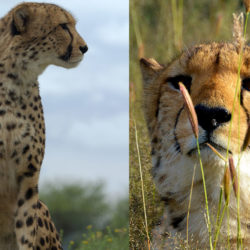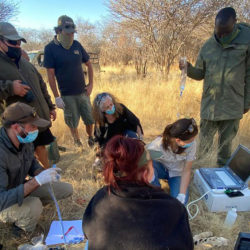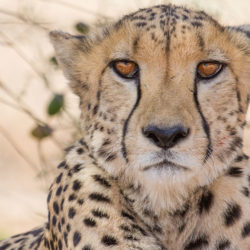Resident Cheetahs – Three Reasons For Not Releasing
-

- by Matt Cleverly November 10, 2008
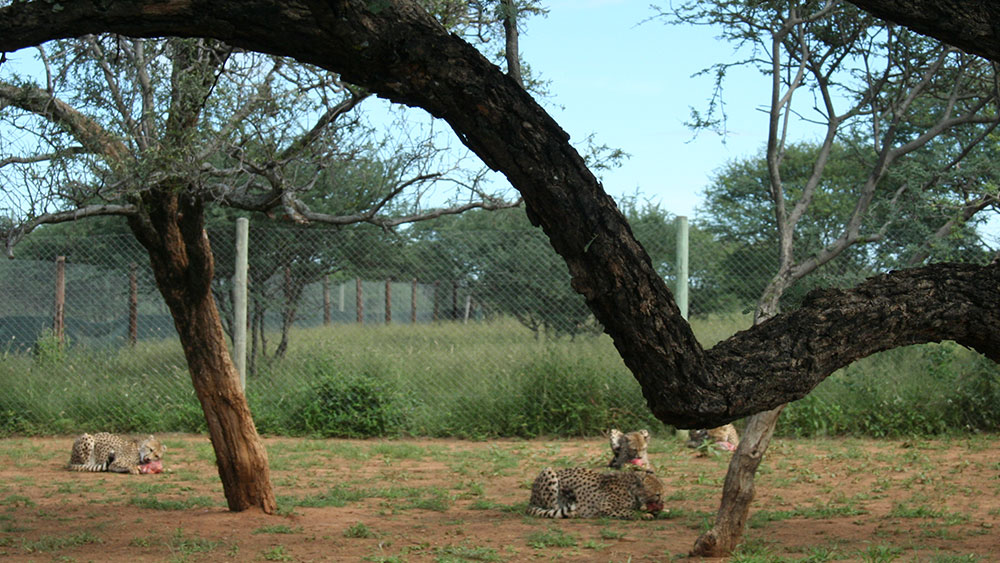
I am fortunate enough to be one of CCF’s cheetah keepers and this is the first of my regular blogs about the ongoing efforts of CCF’s dedicated staff to save the wild cheetah. First let me give a brief introduction to CCF for those of you reading who may have only recently heard of us.
We currently have 50 resident cheetahs on site here that will stay at CCF for the rest of their lives as they are unsuitable to be re-released back into the wild. Why I hear you ask? Well there are 3 main reasons. The first is when a cheetah is orphaned before it reaches maturity, with the majority of mothers having been shot by farmers who have lost livestock or game to cheetahs. The first year of a young cheetah’s life is crucial; it is during this time that it learns essential life skills from its mother such as how to hunt, when to hunt, what to hunt and what dangers to avoid. Without these skills a cheetah would not survive for long in the wild. Sadly this is the story for the majority of our resident cats.
The second is when a cheetah has become too habituated to people, which means if released it will venture too close to human settlements and come into conflict with farmers. This applies for one of our newest cats called Omdillo, who before coming to CCF was held in captivity for many months and has now completely lost his fear of people.
The third reason for a cat being unsuitable for re-release into the wild is when it has suffered an injury that will prevent it from hunting effectively. In January we collected Chester, a young cheetah who had suffered a very bad leg break, fortunately our veterinary team managed to mend his leg and he has made an excellent recovery. However, his leg would not be able to cope with the extreme stress of a full speed chase and would stand a very high chance of re-breaking.
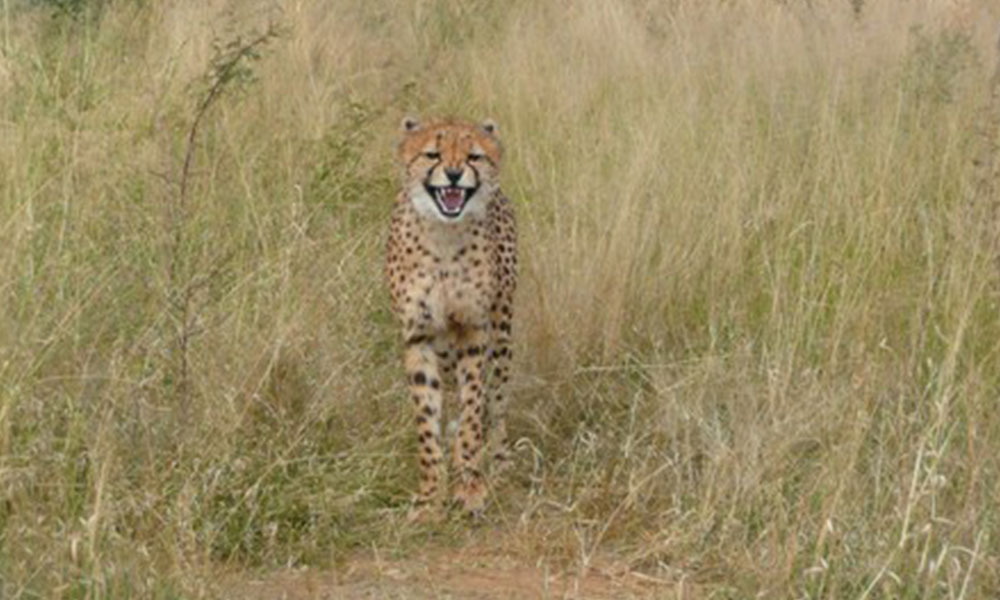
It is of course very sad that these beautiful animals have to remain in captivity. However, they are guaranteed a very happy and healthy life in our large enclosures and they still have a very important role to play in cheetah conservation. They inspire and educate visitors who come to see them and have helped in numerous scientific studies. An exciting new addition to the CCF research centre is a genetics lab. Our resident cats will hopefully help answer many of the intriguing questions about the complex relatedness of wild cheetahs and aid in future conservation efforts. 95% of Namibia’s cheetahs live on farm land and often come into conflict with farmers who view them as a threat to their livestock or game. CCF goes to great effort to educate farmers about management techniques that can reduce predator problems and will remove cheetahs from their land if they continue to be a problem. We also have education and research centres here at our base near Otjiwarongo which receive visitors and researchers from all over the world.
So I’ve given you a very brief overview of CCF, you can learn much more about our history and other projects on this website, so please go explore after you have read this! So what has been happening lately? Well every week here at CCF is eventful but last week has been more eventful than usual.
On the education front, we currently have 16 international conservationists on site who are attending one of our month long conservation and biology courses. Whilst here the students will learn all about what it takes to conserve wild species such as the cheetah. These students have only been here a short time but have already gotten to experience front line cheetah conservation in action when they accompanied CCF staff to rescue a female cheetah with 4 cubs from former Namibian President Dr Sam Nujoma’s farm in Otavi. The mum and cubs were brought back to CCF where we carried out a ‘work up’ which involves putting the cheetah under anaesthesia and taking blood samples, skin samples, measurements as well as attaching an identification ear tag and transponder chip.
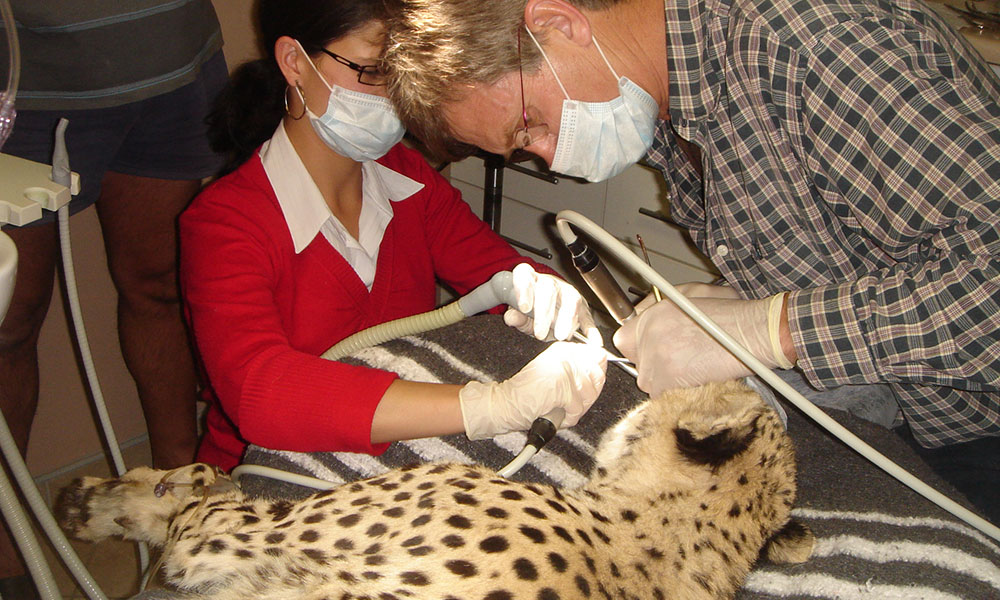
During the work up it was discovered that the female cheetah’s teeth were in poor shape with some missing or broken. In a situation like this CCF takes the cheetah into Otjiwarongo for a visit to the local dentist, Dr. Profit. This always guarantees to turn a few heads when regular visitors turn up for their dental appointment only to see a cheetah lying in the dentist’s chair! Dr. Profit discovered a bad infection in the root of where one of her missing teeth was. The root was removed and one of her blunted canines was sharpened to ensure she will have the best chance of killing her prey. She was then placed back with her cubs in one of our quarantine pens where they will stay until the female has fully recovered from her dental surgery and gained enough weight. Mum and cubs will then be taken to one of our dams and released, which will no doubt be one of the topics of my next blog, which I very much hope you will check out.
Related Reading
-
April 5, 2022
Eulogies for Ron and Khayjay -
November 5, 2021
Field Scans and Clinic Exams with SoundVet -
October 18, 2021
Eulogy for Resident Cheetah B2

